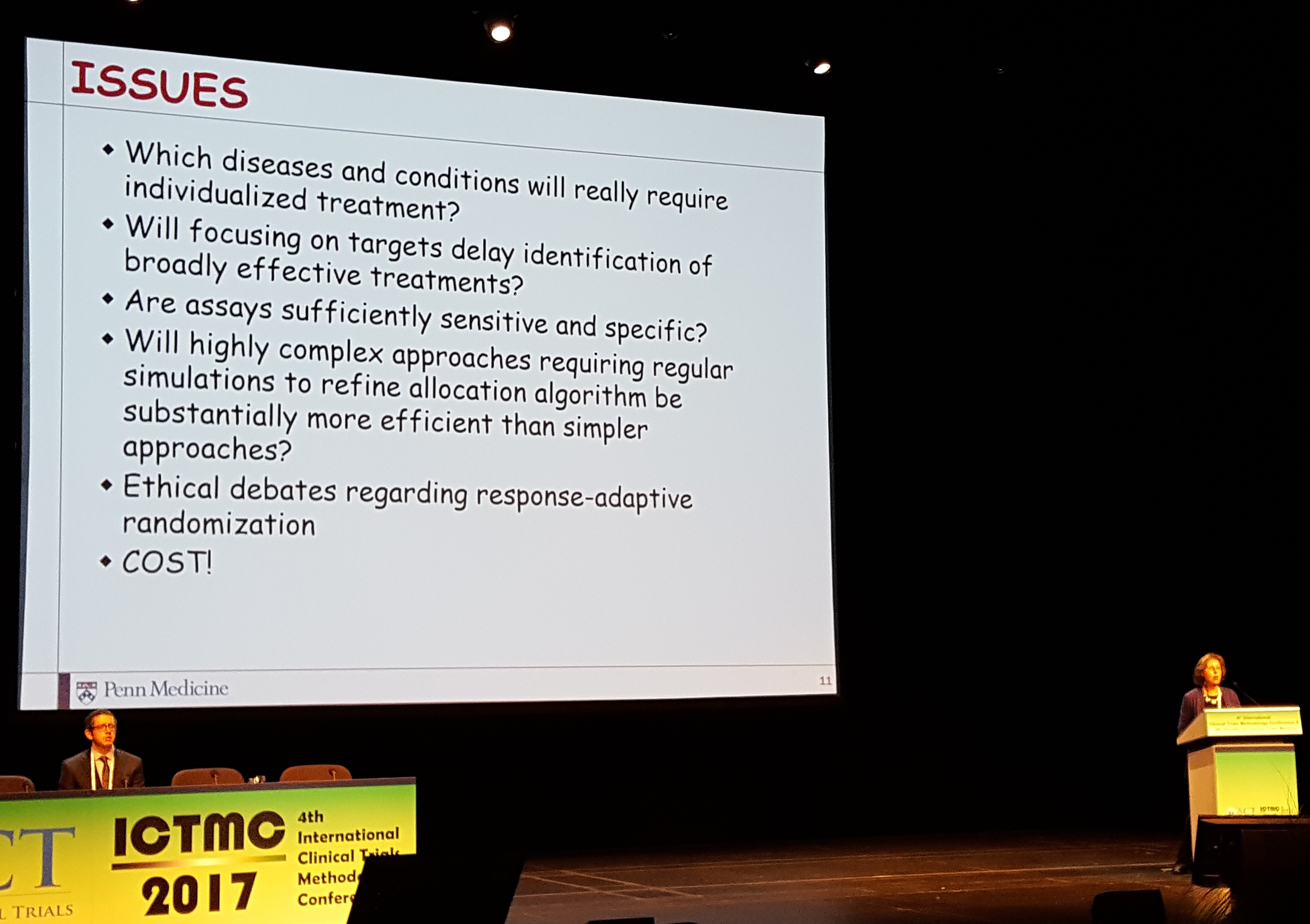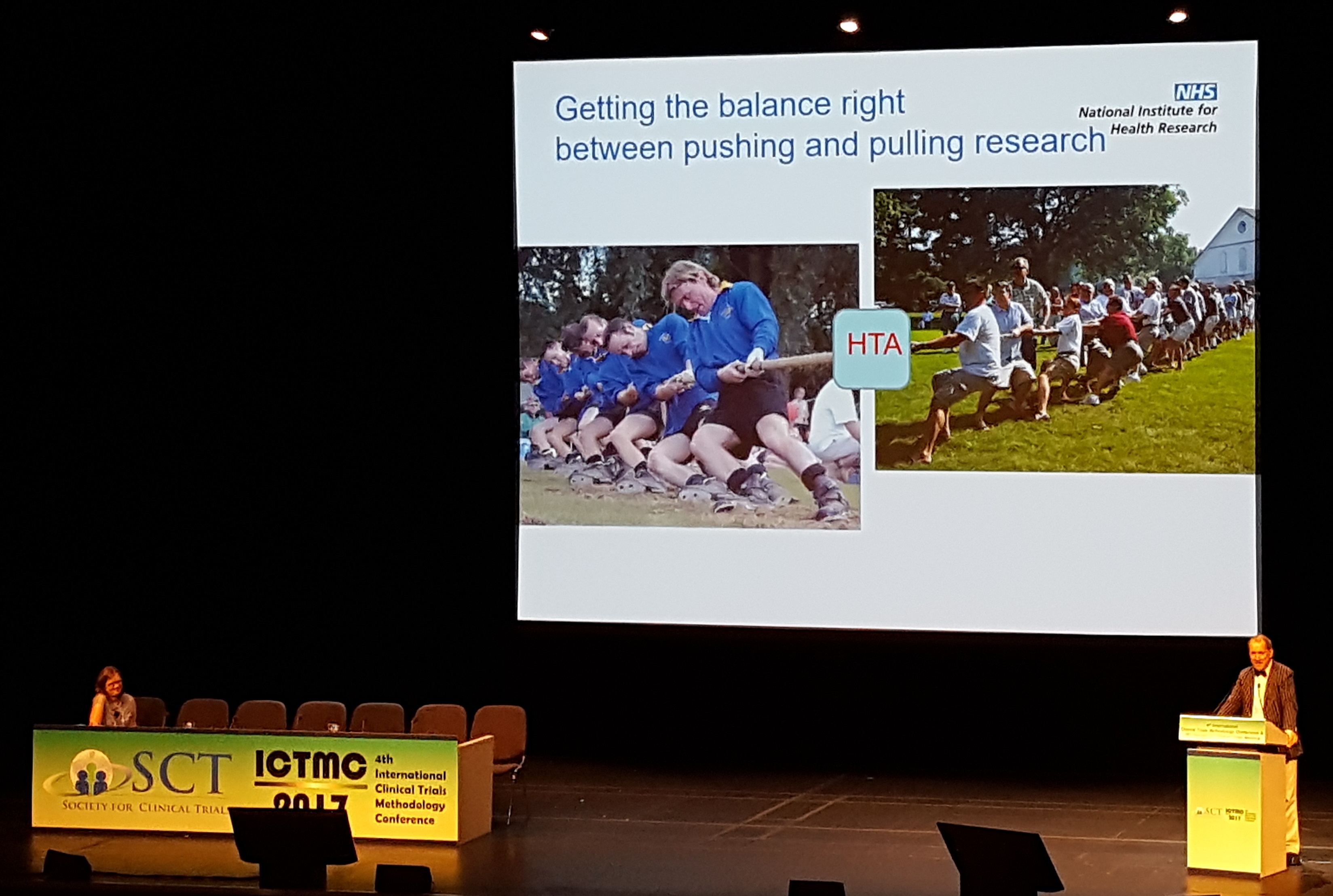
Randomized controlled trials (RCTs) are the gold standard for testing new medical interventions on a population, with their use increasing exponentially throughout the twentieth century up to the present day. With their increasing use and complexity, new challenges have emerged in regards to how RCTs are conducted. This congress brought together leaders in the field to discuss every aspect of the methodology of RCTs including trial design, data analysis and reporting of trial outcomes amongst others.
Current issues and challenges
The first of the three keynote talks, by Dr Susan Ellenberg of the University of Pennsylvania, considered the on-going challenges and the emerging issues of clinical trials in the twenty first century. The first published RCT of the modern era was conducted in 1948 and since then the RCT has undergone constant change and development. One example of this is increasing the complexity of a clinical trial by incorporating individualized treatments dependent on specific biomarkers present in certain members of the study population. However, this brings with it a range of issues including which diseases require individualized treatment, the ethics of pursuing targeted treatments over broad treatments and the cost of these more complex trials. Another issue discussed was how clinical research can be carried out in an emergency situation such as the Ebola outbreak of 2014. In order to both treat patients and also investigate the most effective treatments, clinical research should be implemented from the beginning of the response to ensure that answers are found as quickly as possible.

Clinical trials in the age of big data
Another huge development in medical research in the last few decades has been the proliferation of “big data”. One of the most ambitious projects aiming to use big data in healthcare research is the Million Veteran Program (MVP) with one of the leaders, Dr Michael Gaziano, delivering the second keynote talk. The project aims to enrol one million veterans and will store a range of information on each individual, including self-reported lifestyle data alongside biospecimens. This forms one of the most comprehensive data sets in the world and can be used to research human health and disease. The development of such a large data set has brought many challenges such as learning how to structure and phenotype the data to allow it to be used to answer specific research questions.
Sharing of clinical trial data
With more and more data being collected on individual participants in clinical research, another theme at the conference was data sharing to improve research efficiency. Catrin Tudur Smith and Steff Lewis led a very interesting invited session with contributors discussing how clinical trial data can be shared more effectively, how participants view data sharing, and what data sharing might look like in the future. Trish Groves, Editor in Chief of BMJ Open, provided the point-of-view of the publisher and suggested that journals have a big part to play in encouraging the publication of anonymized data sets alongside trial results. Matt Sydes of the MRC Clinical Trials Unit presented some of the challenges surrounding data sharing, including effective anonymization of the data as well as deciding which data sets are worth preparing for sharing as this can be a time consuming and costly process. The importance of data security was also covered by Gillian Booth as well as the importance of obtaining appropriate consent for data sharing from the participants.
The UK NIHR Health Technology Assessment Program
The final keynote was delivered by Professor Hywel Williams who spoke about the UK NIHR Health Technology Assessment Programme which is one of the largest UK funding bodies of clinical trials, with results directly influencing clinical practice in the NHS. One of the main aims of the program is to conduct timely research to answer specific questions that are required to improve current clinical practice. This is done through a prioritization process to determine which research projects are most needed and are generally those that are important to the NHS, are supported by current evidence, are feasible and that are clear and well defined. One of the take home messages was that the program aims to strike a balance between influencing the research community and also being led by the research community in terms of deciding which projects should be funded.

Comments